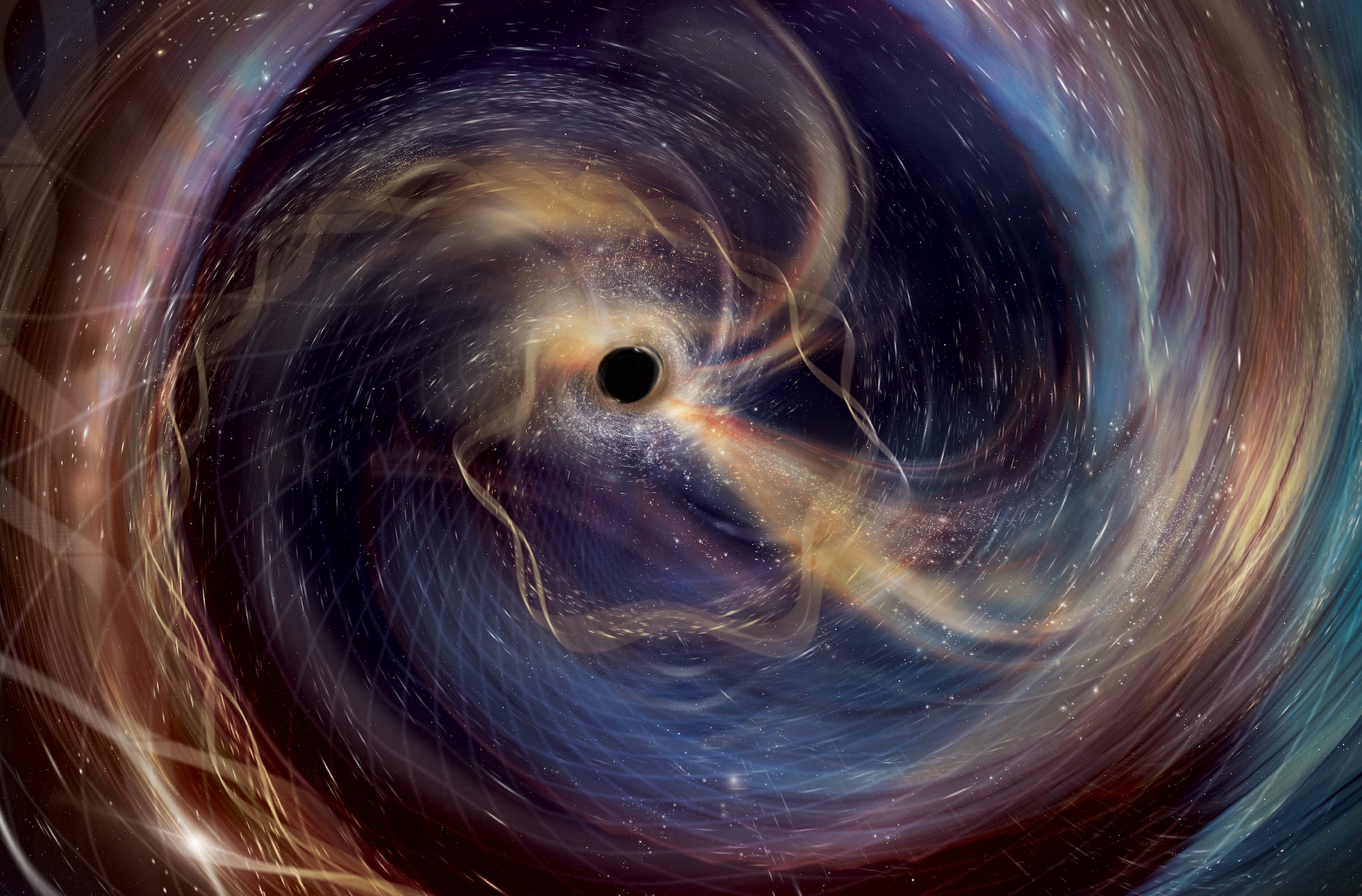Science
Scientists Uncover Loudest Black Hole Merger in Historic Discovery

A team of international scientists has detected the loudest black hole merger ever recorded, marking a significant milestone in gravitational wave research. This discovery comes ten years after the first detection of gravitational waves, which earned the Nobel Prize in Physics in 2017. The latest signal, detected in January 2024, was three times stronger than the original signal, demonstrating the rapid advancements in this field of study.
The collaboration involved key contributions from researchers at the University of British Columbia and utilized the global gravitational wave network, including the Laser Interferometer Gravitational-Wave Observatory (LIGO) in the United States, the Virgo detector in Italy, and the Kamioka Gravitational Wave Detector (KAGRA) in Japan.
Enhancing Detection Capabilities
Dr. Katerina Chatziioannou, an assistant professor of physics at Caltech and co-author of the study published in Physical Review Letters, emphasized the importance of these findings. “This not only means we are accelerating the rate at which we discover new black holes but also capturing detailed data that expand the scope of what we know about the fundamental properties of black holes,” she stated.
Researchers from UBC played a vital role in refining LIGO’s data processing, significantly enhancing the instruments’ sensitivity. Dr. Rhiannon Udall, a postdoctoral researcher in UBC’s department of physics and astronomy, noted, “This is the strongest and cleanest signal we’ve received yet, which allows us to test general relativity with very fine precision. Turns out, Einstein is still right.”
The initial gravitational wave detection in 2015 confirmed Einstein’s century-old prediction that massive, accelerating objects, like colliding black holes, warp the fabric of space, producing gravitational waves that travel through the universe.
Significant Technological Advances
The recent signal originated from two black holes approximately 1.3 billion light-years away, each possessing a mass between 30 and 40 times that of the sun. The clarity and strength of this signal are attributed to technological advancements made over the past decade.
Researchers have improved their detection capabilities by minimizing noise, particularly seismic disturbances caused by environmental factors. Dr. Udall explained that ocean waves and storms can create significant interference, complicating the detection process.
The enhanced technology has piqued the interest of geologists who are exploring the data captured from sensitive ground motion sensors that help isolate LIGO’s instruments from external vibrations. The collaboration has also made strides in reducing quantum noise through a technique known as “squeezing.” Dr. Nergis Mavalvala, a professor at MIT and co-author, elaborated, “What we are ultimately doing inside LIGO is protecting quantum information and making sure it doesn’t get destroyed by external factors.”
In partnership with UBC’s Blusson Quantum Matter Institute, LIGO collaborators are working to develop new materials that further minimize atomic vibrations in detector mirrors. Taylor Starkman, a master’s student in UBC’s PHAS program, remarked, “This instrument is so advanced; we’re now hunting down even these tiny sources of noise.”
Future Prospects for Gravitational Wave Research
The LIGO-Virgo-KAGRA collaboration aims to continue refining their instruments and extend their reach into deeper regions of space. Dr. Jess McIver, an associate professor at UBC, highlighted the unique capabilities of a global network of high-performing detectors. “Gravitational waves have the potential to advance a number of fields such as general relativity and nuclear physics in ways that are otherwise impossible,” he stated.
As scientists celebrate a decade of advancements in gravitational wave detection, this latest discovery not only reinforces the validity of Einstein’s theories but also opens new avenues for understanding the universe’s most enigmatic phenomena. The ongoing research promises to enhance our comprehension of black holes and the fundamental nature of the cosmos.
-

 Science2 months ago
Science2 months agoToyoake City Proposes Daily Two-Hour Smartphone Use Limit
-

 Health2 months ago
Health2 months agoB.C. Review Reveals Urgent Need for Rare-Disease Drug Reforms
-

 Top Stories2 months ago
Top Stories2 months agoPedestrian Fatally Injured in Esquimalt Collision on August 14
-

 Technology2 months ago
Technology2 months agoDark Adventure Game “Bye Sweet Carole” Set for October Release
-

 World2 months ago
World2 months agoJimmy Lai’s Defense Challenges Charges Under National Security Law
-

 Technology2 months ago
Technology2 months agoKonami Revives Iconic Metal Gear Solid Delta Ahead of Release
-

 Technology2 months ago
Technology2 months agoSnapmaker U1 Color 3D Printer Redefines Speed and Sustainability
-

 Technology2 months ago
Technology2 months agoAION Folding Knife: Redefining EDC Design with Premium Materials
-

 Technology2 months ago
Technology2 months agoSolve Today’s Wordle Challenge: Hints and Answer for August 19
-

 Business2 months ago
Business2 months agoGordon Murray Automotive Unveils S1 LM and Le Mans GTR at Monterey
-

 Lifestyle2 months ago
Lifestyle2 months agoVictoria’s Pop-Up Shop Shines Light on B.C.’s Wolf Cull
-

 Technology2 months ago
Technology2 months agoApple Expands Self-Service Repair Program to Canada









